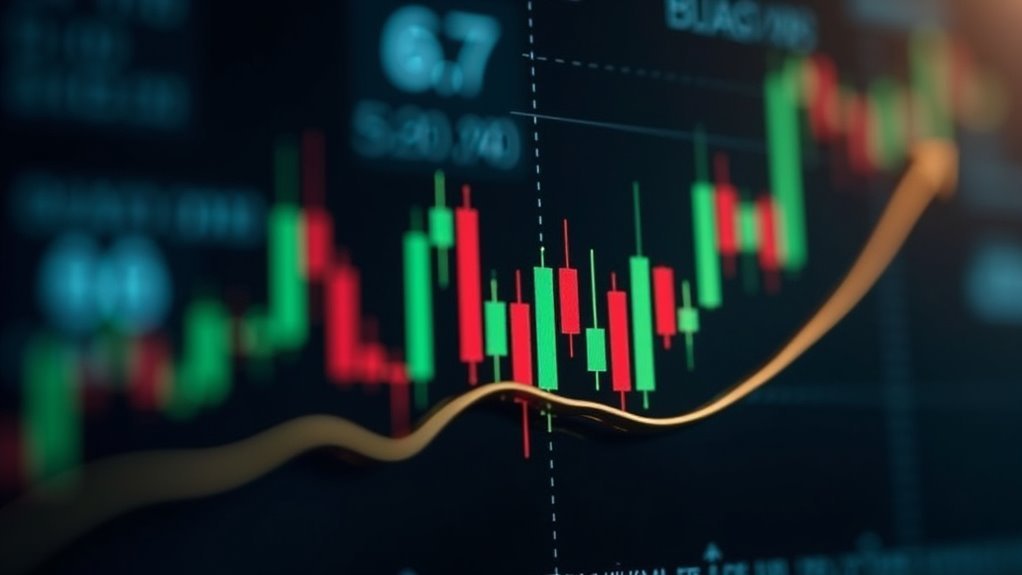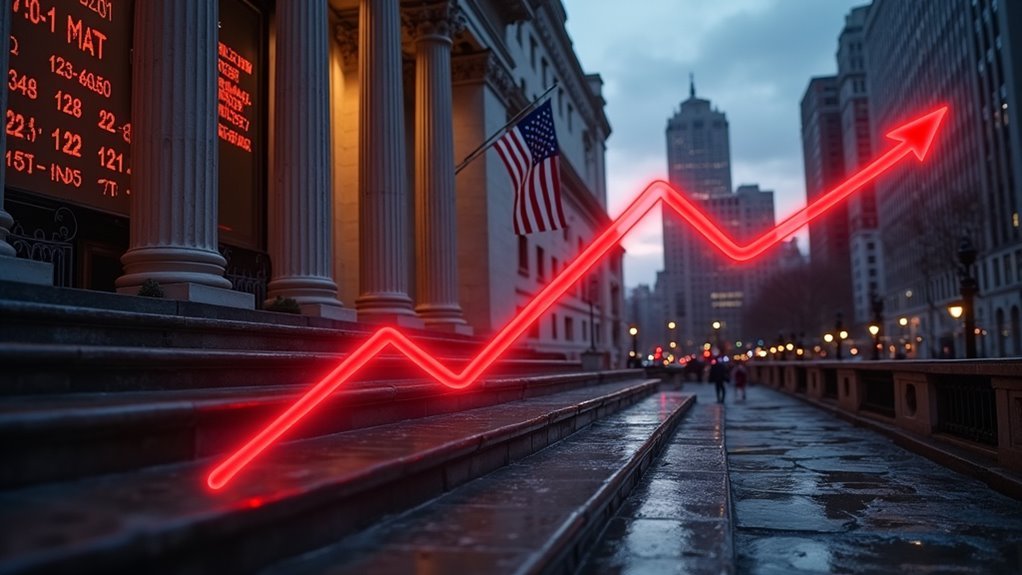The price-to-earnings ratio divides a stock’s price by its earnings per share, revealing how much investors will pay for each dollar of earnings. Simple math, big implications. P/E comes in different flavors – trailing (past), forward (future), and CAPE (10-year average). While tech stocks often sport sky-high P/Es, traditional sectors like utilities keep it modest. Sure, it’s not perfect – negative earnings break the formula. But understanding P/E unveils deeper market insights.

While many investors love to overcomplicate things, the price-to-earnings ratio (P/E) cuts straight to the chase. It’s a simple division: stock price divided by earnings per share. That’s it. No fancy algorithms, no complex formulas – just cold, hard math showing how much investors are willing to pay for each dollar of a company’s earnings.
The market’s obsession with P/E ratios isn’t without reason. This humble metric comes in several flavors: trailing P/E using past earnings, forward P/E using projected numbers, and the fancy-sounding Cyclically Adjusted P/E (CAPE) that looks at 10 years of data. Think of it as choosing between regular, diet, and cherry-flavored versions of the same drink. Companies in the financial sector typically maintain P/E ratios of 10-15. The trailing P/E provides historical performance data from the previous twelve months.
Historically, the S&P 500’s P/E has hovered around 15-20. But here’s where it gets interesting: tech companies often sport P/Es that would make value investors choke on their morning coffee, while utilities plod along with ratios that barely raise an eyebrow. It’s like comparing a Ferrari to a minivan – both have their purposes, but they operate in completely different leagues.
The P/E ratio isn’t perfect. It falls flat on its face when companies report negative earnings, and it can be manipulated faster than a politician’s promises. Smart investors know to use it alongside other metrics, like the PEG ratio, which factors in growth rates. Because let’s face it – a high P/E might mean a stock is overvalued, or it might mean investors expect the company to grow faster than a teenager’s appetite. Many analysts complement P/E ratios with intrinsic value calculations using dividend discount models.
Different industries, different standards. What’s considered a reasonable P/E in one sector might look ridiculous in another. Market sentiment shifts like the wind, causing P/Es to expand and contract across entire sectors.
Value hunters often prowl for low P/E stocks, while growth enthusiasts might shrug off sky-high ratios for companies they believe will dominate the future. In the end, P/E ratios are like weather forecasts – useful tools, but not crystal balls.
Frequently Asked Questions
How Do Negative P/E Ratios Affect Investment Decisions?
Negative P/E ratios signal trouble – plain and simple. They typically mean a company’s losing money, which makes traditional valuation methods useless.
Investors have to get creative, looking at other metrics like price-to-sales or cash flow instead. While some see these stocks as risky bets, others view them as potential turnaround opportunities.
Smart money watches these companies carefully, knowing they could either crash and burn or soar spectacularly.
Can P/E Ratios Predict Stock Market Crashes?
P/E ratios aren’t crystal balls for predicting market crashes, but they’ve raised red flags before major meltdowns.
Sure, the 1929 crash and dot-com bubble both saw CAPE ratios hit 44.2 – spooky coincidence? Maybe.
But markets crashed in 1987 with much lower P/Es.
Think of P/E ratios as one piece of a messy puzzle.
They’re useful warning signs, but they can’t tell you when the party’s actually going to end.
Why Do P/E Ratios Vary Significantly Between Different Industries?
P/E ratios swing wildly between industries because each sector plays by different rules.
Tech companies? Sky-high ratios thanks to massive growth potential.
Utilities? Boring but steady, with lower ratios.
Risk levels matter too – biotech firms command premium ratios for their breakthrough potential, while stable consumer staples keep it modest.
Capital needs, regulation, and market expectations shape these differences. Simple as that.
How Often Should Investors Review and Reassess P/E Ratios?
Investors typically review P/E ratios quarterly, after earnings reports drop. Smart move.
Market shakeups and company drama? Time for an extra look. Most pros check during annual portfolio cleanup too.
It’s not a set-it-and-forget-it deal. Major industry shifts, competitor moves, or economic curveballs demand immediate attention.
Real-time data makes tracking easier, but quarterly checks hit the sweet spot for most.
What Role Do Interest Rates Play in Affecting P/E Ratios?
Interest rates pack a serious punch when it comes to P/E ratios.
It’s pretty straightforward – when rates drop, P/E ratios typically expand. Why? Lower rates make future earnings more valuable today.
When rates climb, P/Es usually shrink. Growth stocks feel this pain more than value stocks since their earnings are further out.
And get this – some sectors like utilities and real estate get hit harder due to their massive borrowing needs.








